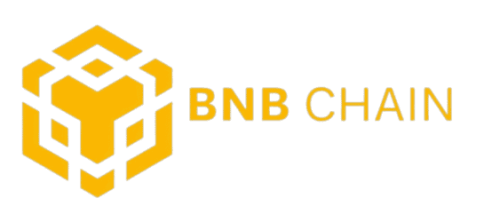The term ‘arbitrage’ has been around for quite a while in economics and business trading and has, therefore, found a way into crypto trading as well. It is associated with the practice of trying to predict market prices and make a profit from that.
Think of it this way; Sally is selling lemonade on the streets of Coopers Lane, the Hamptons and at the same time, her sister, Lilly is in Central Park, Manhattan. It’s the same lemonade, the same water, and the same recipe.
There is no doubt that Lilly will get to earn a good return as the Central Park zoo is a very well-founded area for a lemonade stand.
But who do you think would be able to charge more for the same lemon-plus-water mixture? That’s right, where Lilly enjoyed a profit, Sally will be swimming in it.
A similar idea is behind arbitrage. In this article, we will go over the basics of this DeFi strategy and how it managed to become one of the leading strategies out there.
What is Arbitrage – An Overview
Yes, arbitrage is similar to trading or the practice of predicting market prices to make a profit, but it doesn’t require any sort of predictor algorithm like the stock exchange.
Crypto arbitrage is the practice of buying and selling different assets or currencies between different marketplaces and generating a profit while doing so.
Continuing the example above (of the sisters), Sally and Lilly’s parents can realize the difference in prices and may ask Lilly to pool resources with Sally to sell it on Coopers Lane for better profit. Instead of buying lemons and ice separately, though, if they decide to buy their lemonade – ready and waiting – from Central Park and sell it even for a 0.1% profit, the conditions of arbitrage are fulfilled.
In economics, this practice is known as price discrimination. In DeFi, it is dubbed arbitrage.
A crypto-related example could be the current state of ETH (at the time of writing). The 9% increase in some cryptocurrencies and fall in others would take some time to reflect properly in all the markets. Let’s say you decided to exchange USDT instead of ETH as soon as you heard the news.
You head on to a decentralized exchange and swap ETH as soon as possible for USDT, and immediately head another exchange – perhaps with the intention to sell or just to peruse. You may find that here, USDT has a higher selling price than what you just bought it for and can swap it for Bitcoin at a higher price. Of course, you jump at the opportunity.
If you want USDT, you can then sell Bitcoin in another market, and just like that, you will end up with more USDT than you have before the arbitrage. The concept is quite easy on paper and has the potential for very good returns with minimal risk. But finding the price spread across a range of different marketplaces, such that it is available for the same trading pair, might not be as easy.
As mentioned above, the concept of arbitrage is well-established in the centralized world but has unlocked a whole new way of trading in decentralized exchanges now.
Why Go for Arbitrage Trading?
In the first quarter of 2021, crypto trading was at its peak. Because of the constantly fluctuating demand and supply and the overall volume of trades being initiated every single second, it wasn’t as hard to find a common pair with a difference of about $0.1 to $5 per coin.
During that period, there was a short stretch where there was a difference of $6 in bitcoin, the highest-grossing coins out there, between two exchanges. People took advantage of this, earning profits of around 0.2% to 2.5% per transaction, which amounted to $10 to $50 every day.
Crypto arbitrage requires complete industry knowledge and a near-constant tracking of all the crypto markets available. You need to stay sharp and constantly check for price differences and sales/purchase percentages of different currencies, which can be exhausting. Without all this, taking advantage of the opportunity can be extremely difficult.
Traders can keep an eye on numerous currencies at the same time. Therefore, you should couple crypto arbitrage strategies for a lot more profit per day, week, or month. There is nothing illegal about arbitration.
This tip becomes especially helpful for day traders who aren’t seeing as much market movement.
Of course, there are numerous types of crypto strategies out there, each with its pros and cons. For example, spatial arbitrage is currently the most common type of arbitrage (the examples mentioned above). While safe, this trick may not always be as effective.
Let’s say you purchased the new cryptocurrency with hopes of earning a profit due to the difference in the purchase price. By the time your transaction completes and you get it validated with the miners, the cryptocurrency’s price may not be as favorable anymore and might not give you as much profit as you were hoping.
Although price errors are not as common nowadays since transactions are much faster now, it also means that arbitrage opportunities have also been reduced as marketplaces keep track of crypto value on other markets via software and bots, taking corrective action very quickly.
To capitalize on DeFi Arbitrage, you need to keep a close eye on different markets and access multiple listings within at the same time. This can become quite tedious, and with so little room to make transactions, a lost opportunity or error can seem pretty taxing.
Arbitrage Bots
The best solution to this issue is to use arbitrage tools and software, such as Arbitrage bots. Unlike the stock exchange, cryptocurrency exchanges operate 24/7. An arbitrage trading bot can help you buy and sell cryptocurrencies quickly from multiple exchanges the moment any change occurs. You will need to program the bot, though, to fulfill a specific purpose.
Arbitrage bot monitor price discrepancies across exchanges for your specific pairs and initiate purchases and sales near-instantly. The bots also eliminate the need for constant surveillance from you, the investor, as it operates on its own following set conditions.
Bot Strategies
There are several bot strategies you can use with your cryptocurrency wallet with one of the most popular types being arbitrage bots. These bots are exceptionally helpful because of their speed and accuracy.
Another type of bot that crypto investors can use is one that makes trading decisions based on historical price data. In theory, this type of bot uses an algorithm that predicts an increase or decrease in prices based on past performance and executes trades with respect to its predictions. Owners can also program the bot to trade based on volume.
These bots may allow owners the option of back-testing, i.e., using historic data to devise a strategy accordingly. These bots also help users simulate ‘what-ifs’ and make decisions accordingly.
It’s like eating ice cream right out of the wrapper, imagining the taste, and feeling as if you had let it melt. You then get to decide whether you would have had more fun licking it off the cone (or your fingers) or if you had more fun now.
Some bots allow investors to conduct live testing, a relatively risky approach to the back-testing models. Here, you simulate a strategy in real-time, based on current market performance and indicators to allow the bot and yourself to make sound decisions with respect to the current market.
It’s like looking at a melting ice cream and licking off the drops.

There is no denying that bots can help you trade profitably; especially when it comes to DeFi arbitrage. However, you need to understand you will need to adopt a different strategy for a bullish (rising) market and a different strategy for a bearish (decreasing) market. Furthermore, every other currency well also behaves differently than the other.
You may either have to create a versatile bot, which is quite a lengthy process, or create a single crypto bot for different currencies, which is an even lengthier and repetitive process.
Another key consideration to make when thinking of letting a bot handle your wallet for you is that just because you have implemented a bot, it doesn’t mean that you won’t suffer any loss. Just like any other form of automation, losses are a part of crypto bot automation as well. It is, after all, going to work on a predictor model.
You should expect consistency and good gains, coupled with a few errors and minor losses now and again.
On the other hand, arbitrage is a safe bet with or without automation; this is because even if the bot is slow and the transaction is initiated a bit late, the price will revert to the price you originally bought the new coin for from another marketplace – it won’t go down.
Arbitrage Bots – Tips to Consider
Bot trading doesn’t mean you don’t have to do anything else anymore and that it will handle your wallet perfectly now. Instead, you need to give it a nudge every now and then and show it how the ‘human element’ works. Now, you need to manually step in from time to time and interfere with the bot trading mechanism when it starts panicking or making too many wrong decisions.
Another very important tip is that you implement a ‘failsafe’ or a kill switch in the bot that gets triggered automatically once the coin reaches a specific threshold. These fail-safes are known as “Stop Loss” and “Take Profit” orders. Whenever a trade goes beyond your defined threshold, the trading will automatically stop.
There are a lot of user-friendly bots that you can choose to go with, but creating your own gives you better control over the different features. These include:
How it Works – Arbitrage Bots
When you use any arbitrage bot, it will constantly surveil different marketplaces for different cryptos and identify any discrepancies in prices. If the bot finds any such coin, it will buy the coin on the exchange that has the lower purchase price and then sells it on another exchange, preferably one offering the highest selling price.
This snip snap snip snap continues until you manually stop it.
The profit you earn is known as the crypto ‘spread’, i.e., the difference between the selling price and buying price. You can set a limit on how many coins to buy at once. If you don’t the bot will most likely use up all of your budgets in one go, introducing a huge risk in the process.
Crypto bots usually don’t rely on cryptocurrency trajectories and, therefore, there is very little to no danger from sudden crypto market fluctuations. Crypto arbitrage, especially with bots, becomes very lucrative in a falling market, as we were seeing in the second quarter of 2021.
It is important to note, though, that subscribing to bot programs usually comes with a user fee, which can be quite steep. There are free bot programs as well, but their reliability is questionable. I would recommend you create your own bot and improve it as you go, increasing how much you hedge with experience.
Crypto bots are particularly useful for investors, and if you are planning to earn profits from them, you should do so now as there is currently an active argument about whether or not they should be permitted in trading.
Bots will only execute your orders and will be limited to how you program them. Do not substitute them for a good investment strategy.
Creating Your Own Arbitrage Bot
The only requirement for creating an arbitrage bot is to install the Metamask extension in your browser and have some knowledge about NodeJS. A bot can be created on Python and other languages as well.
You only need to files:
Index.js.
This is a node.js server that will create the base for your bot. it will monitor different exchanges and look for arbitrage opportunities on your behalf. The server will also serve to make sure that the trade is possible and viable before executing it.
TradingBot.sol
This is a smart contract dedicated to the index.js that gets activated when the base server finds a profitable arbitrage. It executes the trade by taking a flash loan and then initiates the trade.
- Start by installing the Metamask extension.
- Create an Ethereum Mainnet account.
- Add some ETH for gas fees.
- I recommend creating a new account with limited funds for this to avoid losses.
- Head over to Remix online IDE 7
- Paste the smart contract solidity code.
- Compile the code using the latest version.
- Deploy the bot on your wallet.
- I recommend allotting it enough amount to create 100 flash loans.
The following fields will be required;
- RPC_URL. The address of an Ethereum node.
- ADDRESS and PRIVATE_KEY: Ethereum address of the bot account and its key.
- CONTRACT_ADDRESS: The smart contract’s address.
- GAS_LIMIT: The limit you want to allow the bot.
- GAS_PRICE: Higher this is, the faster your transaction will be mined.
- ESTIMATED_GAS.
Once you have filled all the fields, execute the command from the root directory by entering node src/index.js.
Alternative
If you aren’t a developer, you will most likely find all of this very confusing.
So, you also have the option of using opensource projects, such as;
- Ccxt. Based on JavaScript/Python/PHP and supports over 120 exchanges
- Blackbird
- Hummingbot.
- Binance Trader. Award-winning trading bot for binance
- Octobot. Cryptocurrency trading bot with a very advanced web interface.
- Peregrine. Suitable for over 130 exchanges in 50 countries.
- R2 Bitcoin Arbitrager. Automatic arbitrage trading system.
Order Book DEXes
Now that we have covered the basics of crypto arbitrages, it is time to consider another key aspect; on and off-chain order books.
As the name suggests, these decentralized exchanges are built on or off-the blockchain.
Off-chain order book DEXes are becoming more popular now as trading off the blockchain means reduced trading costs (gas fees) and faster speeds. Trades are initiated off-chain and completed (settled) on-chain.
The concept combines order books that are used off a blockchain to the on-chain books by reconciling all account changes on and off. This way, traders get to use their decentralized cryptocurrency similar to traditional trading as well.
All trading activity such as the volume, price, expiry, ID, and more are recording in off-chain order books. Once the trade is made, the books off and on the blockchain are reconciled immediately to show the new value on the blockchain.
The transaction doesn’t use the main blockchain to validate every transaction but creates a new ‘layer’ on which the trading activity takes place. Since it doesn’t overload the mainnet, i.e., layer 1, the cost and time of the transaction reduces significantly. Like this bike is passing traffic by.
There are three examples of off-chain order book decentralized exchanges.
Benefits & Risks Associated With Arbitrage
As mentioned above, with arbitrage, there are very few chances of you losing your money unless really huge mistakes were made.
This is because if a trade doesn’t execute as you expected, the transaction will most likely revert because of insufficient funds (the flashloan won’t be repaid). If you were to lose money, it would be because multiple trades cannot be executed at the same time with arbitrage. Hence, if any tokens aren’t sold in time, they will have to sell at a loss or keep the unsold currency; this mostly has to do with speed.
For example, you received some BTC in exchange for ETH on exchange A. Before you were able to initiate the intended arbitrage transaction with the BTC, someone else might have taken advantage of the low BTC price on exchange B (just like you were about to). By the law of demand and supply or by self-correction, if the price doesn’t just revert to its original position and goes down, you will have a bunch of unsold BTC; this is known as price slippage.
Another great advantage of DeFi arbitrage is that if you don’t have the necessary paid for a transaction, you can initiate a flashloan for the same pair and take advantage of the price difference. You can then pay back the loan with the same funds and convert the rest into your preferred pair or currency.
However, arbitrage still remains a rather tedious task. Using bots is an option, but arbitrage bots are notorious for providing marginal returns (when working properly). Not every bot is designed that well, considering how most of them are open source. Those that are well-made have a lot of gas fees associated with them.
One of the most important issues is the successful utilization of a bot. If you aren’t a programmer who can make the necessary adjustments in your bot, there is a major chance you won’t be able to tailor your bot in time. By the time you make said change or prepare yourself to use the bot properly with the new market trend, it may require a new adjustment or may not be allowed in the industry.
DeFi Arbitrage – Is It An Opportunity For Everyone?
DeFi arbitrage has massive potential, especially when coupled with the right bot. It can become a lucrative passive income source with little to no risk and minimal effort on part of the investors. Software development skills can also go a long way here in developing a bot, which further improves chances of success. You get access to a large number of crypto pairs as well with the help of flash loans.
However, the opportunity also brings with it a saturated market, which means the arbitrage opportunities for the everyday trader might be virtually zero. Fiat stability also means that the spread across different markets means a lot of work for a marginal profit unless you have a very large portfolio. What is your opinion on arbitrage? Do you think this is a good DeFi opportunity? Is it the right choice for a beginner, or should it be left for experts? Or should experts avoid it altogether as well?
Let us know by getting in touch with us on Twitter or Telegram today!







